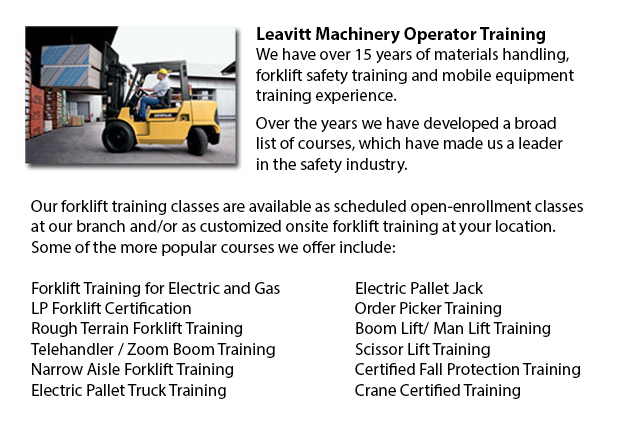
Rough Terrain Forklifts Training Brampton - There are in fact two different classifications of lift trucks within the materials handling market, the industrial model and the rough terrain model. Rough terrain forklifts first came on the marketplace in the 1940's and were being primarily utilized on coarse surfaces, best for areas where no paved roads were available, like building sites and lumberyards.
Typically, nearly all rough terrain lift trucks are run on a propane, diesel or gas driven internal combustion engines with a battery used for power. Several suppliers are experimenting with rough land lift trucks that utilize vegetable matter and run from ethanol. Large pneumatic tires with deep treads distinguish these lift trucks to allow them to latch onto the roughest ground type devoid of any misstep or shifting.
The most basic models of all terrain lift trucks were able to carry weights of up to 1000 lbs, with forks that could run under the item, lift it a little bit and then move it to a different location. After a decade on the market, rough terrain vehicles were given supplementary carrying power to about 2000 lbs capacity. In the 1960's telescoping booms were added, enabling them to stack materials much higher than in preceding years. The telescoping design feature is a staple of most rough terrain lift trucks nowadays. Present styles are capable of managing well over 4000 lbs thanks to the continual improvements through the years. Telescoping ability has also improved with some models attaining a height of 35 feet. Worker safety has also become a focus with some rough terrain lift trucks now designed are fitted with an enclosed cab for the driver, as opposed to the older open air seating capacity.
The rough terrain lift trucks existing today work just as well on paved floors as on unpaved roads. These all terrain lift trucks are being marketed for their usefulness enabling firms to transfer items from outside the plant to the inside or vice versa.
-
Komatsu Forklift
Komatsu Forklift Training Brampton - Komatsu Forklift U.S.A. Inc. has an excellent reputation for building reliable and resilient forklifts. Komatsu is acknowledged around the globe as a corporation with a rich heritage while preserving an outstandin... More -
Hyster Forklift
Hyster Forklift Training Brampton - Hyster is now a global leader in forklifts and warehousing solutions. However, it started as a producer of lifting equipment as well as winches. Most of its production was concentrated in the Pacific Northwest an... More -
Pneumatic Forklifts
Pneumatic Forklifts Training Brampton - Pneumatic lifts are known as pallet trucks or pump trucks and are broadly used in warehouses and transport facilities to transfer resources on pallets. Pneumatic forklifts include a set of metal forks installed... More -
Aerial Lifts
Aerial Lift Training Brampton - Aerial forklifts might be used to accomplish certain different tasks executed in hard to reach aerial places. A few of the tasks associated with this style of jack include performing routine preservation on buildings w... More -
Crown Forklift
More

Forklift Certification Brampton
TOLL FREE: 1-888-254-6157
Brampton, Ontario
forkliftcertificationbrampton.com
Email Us
About Us


